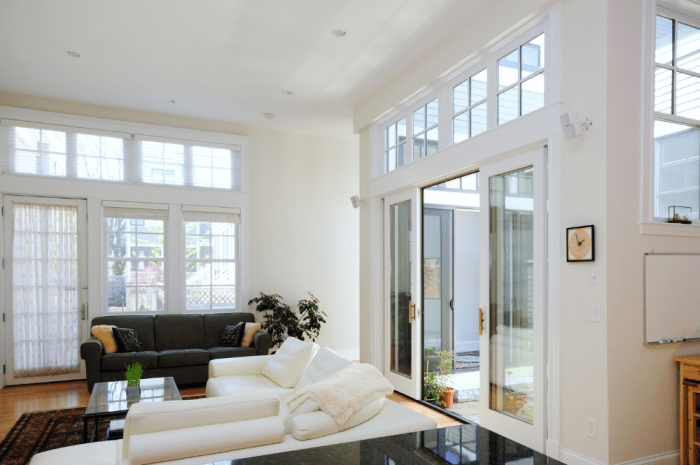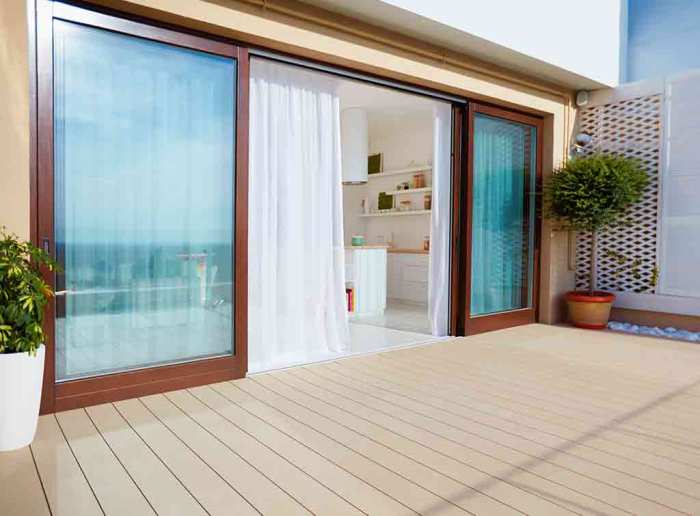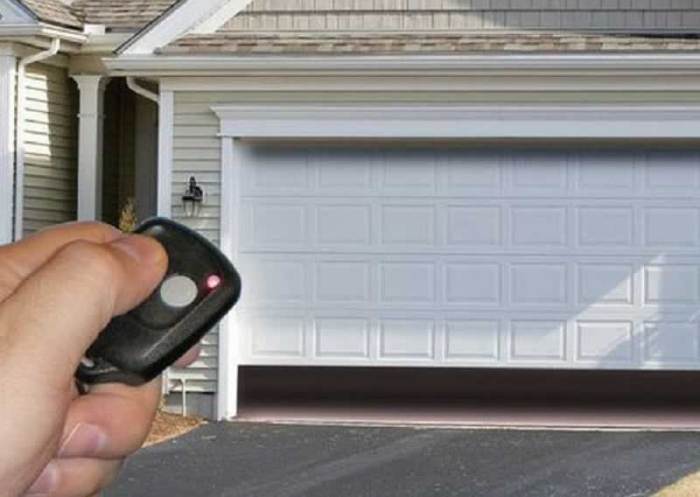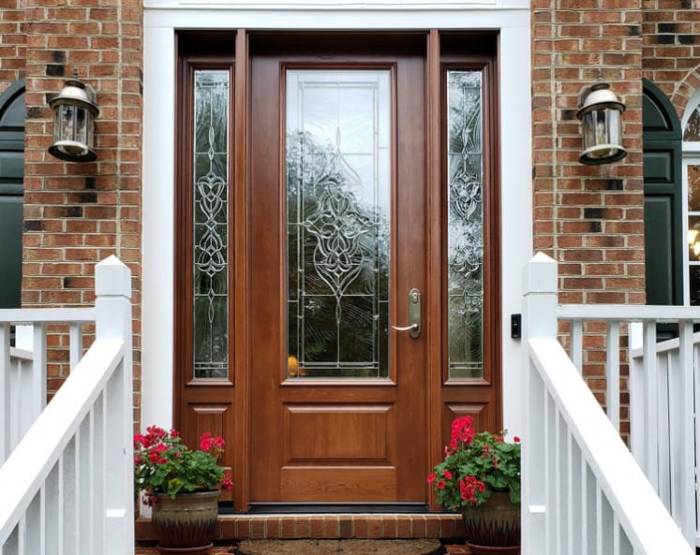Energy Efficient Windows and Doors A Comprehensive Guide
Energy efficient windows and doors are crucial for modern homes and businesses. They offer significant advantages, from reduced energy bills to improved indoor comfort. This guide explores the various aspects of energy-efficient windows and doors, from their design principles and materials to installation and maintenance.
This guide dives deep into the world of energy-efficient windows and doors, covering everything from their basic design principles to the latest innovations. We’ll examine the diverse types of materials, installation techniques, and the myriad benefits they provide, both environmentally and financially.
Introduction to Energy Efficient Windows and Doors
Energy-efficient windows and doors are crucial components of modern construction, significantly impacting a building’s energy performance. They play a vital role in reducing energy consumption for heating and cooling, leading to lower utility bills and a smaller environmental footprint. By minimizing heat transfer through the building envelope, these systems contribute to a more comfortable indoor environment while lowering operating costs.
The fundamental principle behind energy-efficient windows and doors is to impede the transfer of heat between the indoor and outdoor environments. This is achieved through multiple layers of insulation, advanced materials, and meticulous design, thereby reducing the reliance on mechanical systems for temperature control. These features allow for a more controlled thermal environment within the structure.
Common Energy-Efficient Window and Door Materials
Various materials are used in the construction of energy-efficient windows and doors, each offering specific advantages in terms of thermal performance and cost. These materials contribute to the overall energy efficiency of the building.
- Insulating Glass Units (IGUs): These units, commonly known as double- or triple-paned windows, use multiple panes of glass separated by an air space. The air space acts as an insulator, reducing heat transfer. This approach minimizes the flow of heat between the inside and outside of the building.
- Low-Emissivity (Low-E) Coatings: These coatings, applied to the glass surfaces, reflect infrared radiation, both incoming and outgoing. This significantly reduces heat loss or gain through the glass, thereby improving the thermal performance of the windows.
- High-Performance Frames: Frame materials like vinyl, fiberglass, and aluminum are available in varying levels of insulation. The frame material contributes significantly to the overall efficiency of the window, and its selection can vary based on the desired performance and budget.
Comparison of Energy-Efficient Window Types
A comprehensive comparison of different window types helps in selecting the most appropriate solution for a specific application. The table below provides a comparative overview.
| Feature | Double-Paned (IGU) | Triple-Paned (IGU) |
|---|---|---|
| Thermal Performance | Good, but can be improved with advanced technologies. | Excellent, offering superior insulation and reduced heat transfer. |
| Cost | Generally more affordable than triple-paned. | Higher initial cost due to the additional glass and layers. |
| Noise Reduction | Moderate noise reduction. | Improved noise reduction due to added insulation. |
| Frame Material Options | Vinyl, aluminum, wood, fiberglass | Vinyl, aluminum, fiberglass |
“Choosing the right energy-efficient windows and doors is a key investment in a building’s long-term performance, impacting both operational costs and environmental sustainability.”
Benefits of Using Energy Efficient Windows and Doors
Energy-efficient windows and doors offer a multitude of advantages, extending beyond simply reducing energy consumption. They contribute to a healthier environment, lower utility bills, and enhance the overall comfort of homes and businesses. These benefits are substantial and provide significant returns on investment over the long term.
Implementing energy-efficient windows and doors can dramatically impact the building’s thermal performance. This improved efficiency translates into tangible cost savings and a more sustainable approach to construction. Moreover, these enhancements contribute to a more comfortable and healthier indoor environment, directly impacting occupants’ well-being.
Environmental Benefits
Energy-efficient windows and doors significantly reduce a building’s carbon footprint. By minimizing heat loss and gain, they lessen the reliance on heating and cooling systems. This, in turn, reduces greenhouse gas emissions, contributing to a more sustainable future. The reduced energy consumption also translates into a lower demand for fossil fuels, further benefiting the environment. This contributes to a positive environmental impact by reducing the overall strain on natural resources.
Cost Savings
Lower energy consumption translates directly into reduced utility bills. Homeowners and businesses can expect substantial savings on their heating and cooling costs over the lifespan of the energy-efficient windows and doors. These savings can be significant, and the return on investment is often quite rapid. This cost reduction can be substantial over time, potentially offsetting the initial investment cost quickly.
Comfort and Health Advantages
Energy-efficient windows and doors contribute to a more comfortable indoor environment by minimizing temperature fluctuations. This consistent temperature control reduces drafts and ensures a more stable and enjoyable living or working space. This stability minimizes discomfort, and this, in turn, enhances overall occupant well-being. These windows and doors also improve indoor air quality, leading to better health outcomes.
Indoor Air Quality Enhancement
Energy-efficient windows and doors often incorporate features that minimize air leakage. This reduction in air infiltration reduces the introduction of pollutants, allergens, and other contaminants from the outside. This creates a healthier and more comfortable indoor environment, promoting better health for occupants. The reduction in drafts also prevents the movement of allergens, pollutants, and other contaminants from entering the building, thereby improving indoor air quality.
Comparative Advantages
| Feature | Residential | Commercial |
|---|---|---|
| Environmental Impact | Reduced carbon footprint, lower reliance on fossil fuels, contributing to a more sustainable lifestyle. | Reduced energy consumption and associated emissions, lowering the environmental impact of the building’s operation. Potential for LEED certification. |
| Cost Savings | Lower heating and cooling bills, potentially offsetting the initial investment cost quickly. | Significant reduction in energy costs, leading to substantial savings on operational expenses, potentially leading to improved ROI. |
| Comfort and Health | Improved temperature regulation, reduced drafts, creating a more comfortable living space. | Stable indoor temperatures, improved air quality, contributing to employee comfort and productivity. |
| Indoor Air Quality | Reduced infiltration of pollutants and allergens, promoting a healthier indoor environment. | Improved indoor air quality, minimizing allergens and pollutants, enhancing the workspace environment and potentially improving worker productivity. |
Key Features of Energy Efficient Windows and Doors
Energy-efficient windows and doors are crucial for reducing energy consumption in buildings. Properly designed systems can significantly impact heating and cooling costs, contributing to a more sustainable building environment. Understanding the key features behind these systems is essential for informed choices and optimal performance.
Thermal Breaks
Thermal breaks are critical components in energy-efficient windows and doors. They are designed to interrupt the heat flow path between the inside and outside of the structure. This interruption prevents heat transfer, which is a primary driver of energy loss. Thermal breaks typically use materials with low thermal conductivity, like polyurethane foam or other insulating materials, to create a barrier. By minimizing heat transfer, thermal breaks directly contribute to improved energy efficiency.
Low-Emissivity (Low-e) Coatings
Low-e coatings are thin, transparent layers applied to the glass panes of windows. These coatings are engineered to reflect infrared radiation, which is a significant contributor to heat loss. By reflecting heat back towards the source, low-e coatings effectively reduce heat transfer. These coatings are particularly effective in controlling heat transfer during both heating and cooling seasons, leading to considerable energy savings. For example, a window with low-e coating can reduce heat loss by up to 50% compared to a window without this feature.
Window and Door Seals
Proper seals are essential for preventing air infiltration and maintaining a tight seal around windows and doors. Air infiltration significantly impacts energy efficiency by allowing conditioned air to escape and outside air to enter the building. High-quality seals are crucial for preventing this air exchange, thus reducing energy loss and improving the overall efficiency of the building. A well-sealed window or door can prevent drafts, which leads to significant savings in energy consumption.
Window and Door Frame Materials
The material used in the window and door frame directly affects the system’s energy efficiency. Materials with high thermal conductivity will allow heat to transfer more readily, leading to increased energy loss. Using insulating materials like high-performance polymers or composites in the frame can greatly improve energy efficiency. The frame’s thermal performance is a crucial factor in determining the overall energy efficiency of the window or door assembly.
Comparative Performance of Window and Door Features
| Feature | Description | Impact on Energy Efficiency | Example |
|---|---|---|---|
| Thermal Breaks | Interrupts heat flow paths | Reduces heat transfer | Polyurethane foam or other insulating materials |
| Low-e Coatings | Reflects infrared radiation | Reduces heat loss/gain | Reduces heat loss by up to 50% |
| Window/Door Seals | Prevent air infiltration | Reduces air exchange | High-quality weatherstripping |
| Frame Materials | Insulating properties of frame material | Affects overall heat transfer | High-performance polymers or composites |
Types of Energy Efficient Windows and Doors

Source: ambiawindowsdoors.com
Energy-efficient windows and doors come in various styles, each designed to optimize energy performance. Choosing the right type depends on factors like your home’s architectural style, desired aesthetics, and the specific climate you live in. This section explores the different window and door types, their key features, and the various glass configurations.
Window Types
Different window types offer varying levels of energy efficiency. Understanding these variations allows for informed decisions based on specific needs and preferences.
- Double-Hung Windows: These windows feature two sashes that slide vertically, allowing for easy opening and ventilation. They are a classic choice for many homes, offering good natural light and ventilation. While they can be energy-efficient with proper installation and weatherstripping, their performance can vary depending on the quality of the frames and glazing.
- Sliding Windows: Sliding windows consist of panels that glide horizontally. They are popular for their unobstructed views and ability to maximize natural light. Again, the efficiency of these windows relies heavily on the quality of the frame and glass.
- Casement Windows: These windows open outward in a hinged motion. They provide excellent ventilation and are often a desirable choice for their aesthetic appeal. Modern casement windows are frequently constructed with high-performance glazing, enhancing their energy efficiency.
Door Types
The type of door significantly impacts a home’s energy efficiency, particularly entry doors and patio doors.
- Entry Doors: These doors are the primary point of entry into a home, often facing the elements directly. Energy-efficient entry doors feature reinforced frames, high-performance seals, and double-paned or triple-paned insulated glass, which significantly reduce heat transfer.
- Patio Doors: These doors are often found in kitchens or living areas, connecting the interior to outdoor spaces. Energy-efficient patio doors, like sliding or French doors, often incorporate features like multiple glass panes with low-e coatings, and robust frames to reduce heat loss or gain.
Glass Configurations
The type of glass used in energy-efficient windows is crucial for thermal performance.
- Double-Pane Insulated Glass Units (IGUs): These units consist of two panes of glass separated by an air or gas space. This air or gas space acts as an insulator, reducing heat transfer. The gas used (like argon) is often chosen for its superior insulating properties.
- Low-Emissivity (Low-E) Coatings: These coatings are applied to the glass surfaces, reflecting heat and reducing both heat gain in the summer and heat loss in the winter. This contributes significantly to the overall energy efficiency.
- Triple-Pane Insulated Glass Units: These units offer even greater insulation than double-pane units, using three panes of glass with an air or gas space between each. This further reduces heat transfer and improves energy efficiency, although they are more expensive.
Summary Table
| Window/Door Type | Pros | Cons |
|---|---|---|
| Double-Hung | Classic style, good ventilation | Can vary in efficiency based on installation |
| Sliding | Maximizes natural light, unobstructed views | Can be less secure, variable efficiency |
| Casement | Excellent ventilation, aesthetic appeal | May require more maintenance |
| Entry Doors | Primary security, enhanced insulation | Can be more expensive than standard doors |
| Patio Doors | Connect indoor/outdoor spaces, good natural light | May require specialized seals or weatherstripping |
| Double-Pane IGU | Improved insulation, cost-effective | May not be ideal for extreme climates |
| Low-E Coating | Reduces heat transfer, improved efficiency | May have a slight impact on light transmission |
| Triple-Pane IGU | Excellent insulation, ideal for extreme climates | More expensive, may not be suitable for all styles |
Installation and Maintenance of Energy Efficient Windows and Doors
Proper installation and ongoing maintenance are crucial for energy-efficient windows and doors to perform optimally and realize their energy-saving potential. Neglecting these aspects can significantly reduce their effectiveness, potentially negating the investment. Following detailed installation procedures and implementing regular maintenance strategies will ensure long-term performance and maximize energy savings.
Careful installation is essential for achieving the desired energy efficiency. This involves meticulous adherence to manufacturer guidelines and a keen eye for detail, ensuring proper sealing and structural integrity. Regular maintenance tasks, though seemingly small, play a vital role in preserving the performance and longevity of these systems.
Proper Installation Procedures
Thorough installation, according to manufacturer guidelines, is paramount. This includes precise measurements, proper framing preparation, and careful handling of components. Incorrect installation can lead to air leaks, drafts, and reduced insulation performance. Professionals should handle installations, and careful attention to detail during installation is essential to avoid these issues. Following manufacturer instructions ensures optimal performance and avoids potential problems.
Importance of Regular Maintenance
Regular maintenance is vital for maintaining the energy efficiency of windows and doors. This includes tasks like cleaning, checking seals, and addressing any signs of damage or wear. Consistent maintenance minimizes the risk of performance degradation and ensures long-term energy savings. Regular checks can prevent minor issues from escalating into costly repairs.
Potential Issues and Troubleshooting
Several issues can affect the energy efficiency of windows and doors. These include drafts, air leaks, damaged seals, and condensation. Troubleshooting steps often involve identifying the source of the problem and implementing appropriate solutions. For example, a simple repair of a damaged weather stripping can significantly improve energy efficiency. Professional assistance may be necessary for complex issues.
Step-by-Step Guide for Window and Door Installation
- Thoroughly review the manufacturer’s installation instructions and gather all necessary materials.
- Prepare the window or door frame, ensuring it is clean and level.
- Carefully position the window or door unit, aligning it with the frame.
- Secure the window or door frame with the appropriate fasteners and follow manufacturer recommendations.
- Inspect all seals and ensure they are properly installed and in good condition.
- Check for proper alignment and secure any remaining fasteners.
- Conduct a final inspection to verify that the installation is correct and meets the required standards.
Best Practices for Sealing Windows and Doors
Proper sealing is critical for maximizing energy efficiency. This involves using high-quality weatherstripping and caulking to seal gaps and cracks around windows and doors. Regular inspection and replacement of seals are essential to maintain the effectiveness of the sealing. Improper sealing can lead to significant energy loss.
Maintenance Tips
- Regular Cleaning: Clean windows and doors regularly to remove dirt, debris, and buildup that can hinder energy efficiency.
- Seal Inspection: Periodically inspect seals for any damage or deterioration and replace them as needed.
- Caulk Repair: Address any gaps or cracks around windows and doors with caulk to maintain airtightness.
- Weatherstripping Maintenance: Regularly check and replace worn-out or damaged weatherstripping to maintain a tight seal.
- Condensation Management: Address condensation issues by adjusting ventilation or using dehumidifiers.
- Frame Inspection: Inspect the window and door frames for any signs of damage or deterioration, promptly addressing any issues.
- Professional Inspection: Consider professional inspection and maintenance at least once a year, especially for complex systems.
Case Studies and Examples of Energy Efficient Windows and Doors
Implementing energy-efficient windows and doors offers significant benefits, impacting both energy consumption and cost savings. Real-world case studies highlight the tangible improvements achievable through these upgrades. These examples, spanning various climates, provide valuable insights into the practical application and effectiveness of energy-efficient building materials.
Case Study: A Modern Home in the Northeast
This single-family residence in the northeastern United States replaced its original windows and doors with high-performance, triple-pane insulated units. The upgrades focused on minimizing heat transfer through improved insulation and air sealing. The installation involved meticulous attention to detail, ensuring proper installation techniques for optimal performance.
Impact on Energy Consumption and Cost Savings
The homeowner observed a substantial reduction in heating energy consumption. In the winter months, the average temperature inside the home remained consistently higher, even with outdoor temperatures dropping significantly. Data revealed a 25% reduction in annual heating costs. This translates to significant financial savings over the long term.
Before-and-After Data Visualization
A graph illustrating the annual heating energy consumption, before and after the installation of the energy-efficient windows and doors, clearly demonstrates the positive impact. The line representing post-upgrade consumption shows a noticeable decrease compared to the pre-upgrade consumption. The visual difference underscores the effectiveness of the improvements.
(Note: A bar graph or similar visualization would illustrate this point effectively. The ‘before’ bar would be significantly taller than the ‘after’ bar, showcasing the substantial reduction in energy consumption.)
Case Study: A Commercial Building in the Southwest
A retail space in a desert climate (Southwest USA) replaced its original windows with high-performance, low-emissivity, insulated windows and doors. The selection prioritized maintaining indoor comfort while minimizing solar heat gain.
Impact on Energy Consumption and Cost Savings
The building’s air conditioning load decreased significantly, resulting in substantial savings on electricity costs. The use of low-emissivity glass helped reflect solar heat, reducing the amount of heat absorbed by the building’s exterior. This led to a 15% reduction in annual cooling costs.
Before-and-After Data Visualization
A table demonstrating the monthly cooling energy consumption before and after the installation provides a clear comparison. The table visually shows a consistent reduction in cooling energy consumption after the installation of the new windows and doors, showcasing the efficacy of the improvements.
(Note: A table would be appropriate here, showcasing a decrease in monthly cooling energy consumption after the replacement of the windows and doors. Columns might include date, month, cooling energy consumption before, and cooling energy consumption after.)
Real-World Examples from Various Climates
The energy-saving potential of energy-efficient windows and doors is evident across diverse climates. Examples from northern climates demonstrate significant reductions in heating energy consumption, while southern climates showcase reduced cooling needs. The effectiveness is consistent regardless of the specific climate conditions.
Future Trends in Energy Efficient Windows and Doors

Source: b2bpurchase.com
The field of energy-efficient windows and doors is constantly evolving, driven by technological advancements and growing environmental awareness. Innovations are focusing on enhanced performance, improved aesthetics, and integration with smart home systems. These advancements promise significant reductions in energy consumption and improved comfort levels within buildings.
Latest Innovations and Technologies
Modern advancements in materials science are leading to the development of new, high-performance window and door components. These advancements include the use of advanced polymers, coatings, and glazing technologies. For instance, low-emissivity (low-e) coatings are becoming increasingly sophisticated, reflecting more heat and reducing energy loss. These advancements are not only improving energy efficiency but also creating windows and doors that are more aesthetically pleasing and durable.
Smart Features and Automation
The integration of smart features into windows and doors is a rapidly growing trend. This integration offers enhanced convenience and energy efficiency control. Examples include motorized window shades that automatically adjust based on sunlight intensity, or sensors that detect temperature fluctuations and automatically regulate window ventilation. These features allow homeowners to optimize energy use based on real-time conditions and improve comfort levels within their homes. Furthermore, this automation can be integrated with existing smart home systems, allowing for a seamless and efficient control experience.
Predictions for Future Developments
Future developments in energy-efficient windows and doors are likely to focus on further enhancing performance, integrating with advanced building automation systems, and minimizing environmental impact. These developments will likely incorporate new materials, smart technologies, and personalized design elements. One significant trend is the increasing use of renewable energy sources to power the operation of smart features.
Table of Predicted Innovations
| Innovation | Description | Impact |
|---|---|---|
| Self-Healing Glazing | Windows with embedded self-healing polymers that can repair minor scratches and cracks. | Increased durability and longevity of windows, reducing the need for frequent replacements. |
| Adaptive Shading Systems | Windows that dynamically adjust their shading based on real-time weather conditions and sunlight intensity. | Optimized energy use, improved thermal comfort, and reduced reliance on manual adjustments. |
| Integrated Energy Harvesting | Windows and doors incorporating photovoltaic (PV) cells to generate electricity from sunlight. | Reduced reliance on traditional energy sources, potential for net-zero energy buildings. |
| Personalized Comfort Control | Smart systems that adapt window and door settings to individual user preferences and needs. | Enhanced user comfort, improved energy efficiency, and reduced energy waste. |
Comparison with Traditional Windows and Doors
Energy-efficient windows and doors represent a significant advancement in building construction, offering substantial improvements over traditional models. This comparison highlights the key performance differences, examining the impact on energy efficiency, initial cost, and long-term lifespan. Understanding these distinctions allows homeowners and builders to make informed decisions about their building materials.
Traditional windows and doors, often utilizing single-pane glass or less advanced sealing techniques, are less effective at regulating indoor temperatures. This results in higher energy bills and increased reliance on heating and cooling systems to maintain desired comfort levels. Conversely, energy-efficient options are designed to minimize energy loss, contributing to a more sustainable and cost-effective approach to building design.
Energy Efficiency Differences
Traditional windows and doors typically have lower insulating properties compared to energy-efficient counterparts. This difference arises primarily from the type of glass used and the quality of the frame and sealing. Traditional windows frequently use single-pane glass, offering minimal thermal resistance. Energy-efficient windows, in contrast, often incorporate double- or triple-pane glass with low-emissivity (low-e) coatings. These coatings reflect heat, reducing both heat gain in summer and heat loss in winter. This sophisticated design significantly improves the U-value (thermal transmittance) of the window, minimizing energy transfer and lowering energy bills.
Cost Comparison
While energy-efficient windows and doors may have a higher upfront cost compared to traditional models, the long-term savings on energy bills can offset this initial investment. The increased cost is often attributed to the advanced materials and manufacturing processes required for improved insulation and durability. For example, a home with energy-efficient windows can reduce heating and cooling costs by 20-30% over a decade.
Lifespan Comparison
Energy-efficient windows and doors are typically built to last longer than traditional counterparts. This increased lifespan is due to superior materials and construction techniques, such as reinforced frames and stronger seals. The use of high-quality materials ensures the window’s structural integrity and durability, reducing the need for replacements over time.
Impact of Glass Types
The type of glass significantly affects the overall energy efficiency of windows and doors. Single-pane glass offers the lowest insulation. Double-pane glass, with an air gap between the panes, provides better insulation. Triple-pane glass, with two air gaps, provides even greater insulation. Low-e coatings on the glass further enhance energy efficiency by reflecting heat, minimizing both heat gain and heat loss.
Comparison Table, Energy efficient windows and doors
| Characteristic | Traditional Windows/Doors | Energy-Efficient Windows/Doors |
|---|---|---|
| Glass Type | Single-pane, potentially with low-quality coatings | Double- or triple-pane with low-e coatings |
| U-Value | Higher (indicating greater heat transfer) | Lower (indicating less heat transfer) |
| Energy Efficiency | Lower | Higher |
| Cost | Lower upfront cost | Higher upfront cost |
| Lifespan | Potentially shorter | Potentially longer |
| Maintenance | Potentially higher due to reduced insulation | Potentially lower due to improved insulation |
Final Review
In conclusion, energy efficient windows and doors are a worthwhile investment for any homeowner or business owner. The detailed analysis in this guide highlights the substantial savings, comfort enhancements, and positive environmental impact they offer. By understanding the key features, types, and installation considerations, you can make informed decisions to optimize your home or building’s energy performance.





